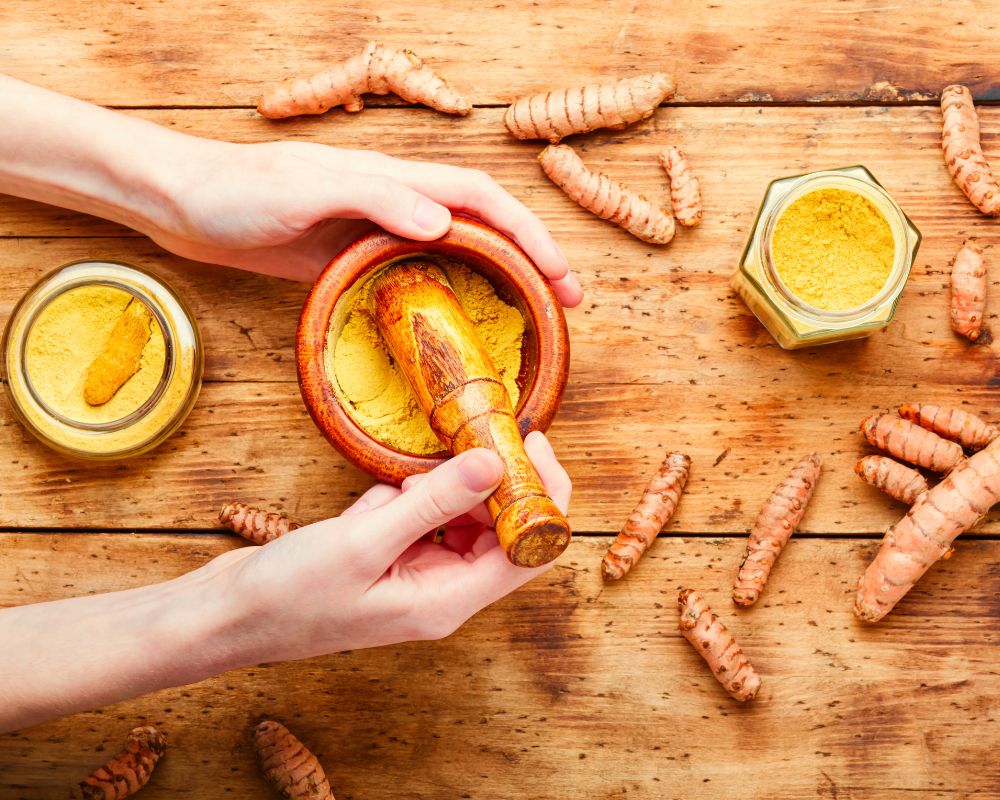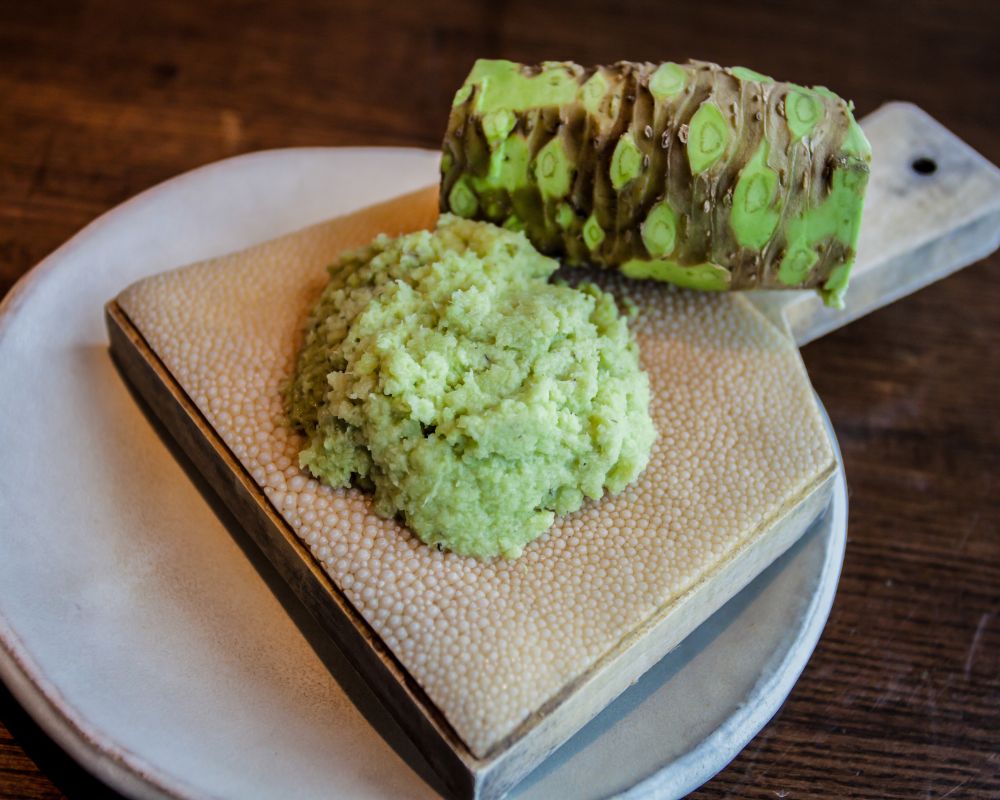The mustard powder has a uniquely spicy flavor profile with a certain degree of acidity and pleasant heat. If you’re looking for the best substitute and a quick fix, try turmeric, horseradish, and wasabi powder, among others.
Table of Contents
What is the difference between mustard powder and mustard seeds?


Mustard powder (also known as dry or ground mustard) and mustard seeds come from the mustard plant. The main difference is their form. Mustard powder is essentially fine-textured ground mustard seeds. The latter are small spheres about a millimeter in diameter.
The seeds used in ground mustard can be black, brown, or yellow, depending on the plant variety.
Black mustard seeds are the rarest and have the most intense pungency. Brown mustard seeds’ pungency is acrid. Experts use these seeds to create Dijon and whole-grain or stone-ground mustard.
The mildest flavor comes from yellow mustard seeds, the main ingredient in the prepared mustard (the ready-to-use condiment in many grocery stores).
Whole mustard seeds, when in powdered form, may lose flavor and heat over time. This is why some prefer grinding the seeds when preparing a dish than using a pre-ground product. Grinding results in the release of volatile oils that make this spice tangy and hot.
What is mustard powder used for?
You can use mustard powder to create other mustard-based condiments and pastes like the Dijon, prepared, and English mustard. These condiments can bring life to kitchen staples such as honey mustard and vinaigrettes.
You will typically see these condiments used in hot dogs, charcuteries, and salads.
You can use mustard powder in salad dressings, spice rubs, marinades, soups, and stews. Stir it into brown sugar with orange juice and bourbon, and create an oh-so-good glaze for that baked ham.
Mustard also pairs well with cheese. You’ll see it as a mainstay in cheese sauces and soups, giving these culinary pieces a nice tangy flavor.
Mustard powder is useful in American, African, Asian (especially India and China), and European cuisine. For example, France is the world’s largest consumer of mustard.
The best substitute for mustard powder in dry rub

Though not as popular in Western cuisine as in Asia, turmeric powder can do many culinary wonders. It’s the best option if you’re looking for dry mustard substitutes.
It has the same yellow color and a flavor profile close to mustard, but it tastes slightly bitter with peppery notes. If you don’t have mustard powder but need a dry rub marinade for vegetables and meats, it’s time to take that turmeric powder out of your pantry.
Use it in equal parts, but if you dislike its bitter flavor, try adding a bit less. The best ratio is 1:1.
Ultimate substitute for mustard powder in mac and cheese

Also called French mustard, Dijon mustard is an excellent substitute for dry mustard for making mac and cheese. This paste contains brown mustard seeds mixed with vinegar, wine, and spices. Its distinctive tangy flavor and acidity cut through the fats of the cheese.
However, since it’s less potent than mustard powder, double the amount.
7 alternatives to consider
Expand your options further with these seven mustard substitutes.
- Yellow mustard
- Horseradish powder
- Horseradish sauce
- Wasabi powder
- Prepared wasabi
- Chopped arugula
- Mustard seed
| Yellow mustard | Composed of ground mustard, vinegar, turmeric, and other spices, great for stews and soups |
| Horseradish powder | Milder and more aromatic, an ideal swap if you make stews, glazes, marinades, dips, and salad dressings |
| Horseradish sauce | Mixed with cream, sour cream, or mayonnaise, goes well with red meat |
| Wasabi powder | Spicier and has a more intense stimulating flavor, works well with fish dishes |
| Prepared wasabi | Strong and hot, usually present in Asian cuisine |
| Chopped arugula | Slightly bitter, used as a replacement in dips and dressings |
| Mustard seed | Same taste as mustard powder, used in all recipes that call for a powdered form |
1. Yellow Mustard

Prepared or yellow mustard is a mustard composed of ground mustard, vinegar, turmeric, and other spices. It boasts low pungency and high acidity and is milder than ground mustards made of brown and black mustard seeds.
For stews and soups, replace a teaspoon of dry mustard with a tablespoon of prepared mustard. Be sure to take a teaspoon of liquid from the recipe to compensate for the extra liquid the moist yellow mustard brings.
2. Horseradish Powder

Horseradish contains mustard oils and natural flavor compounds responsible for the zest of a dry mustard powder. A horseradish powder (made of ground-dried horseradish root) is milder and more aromatic, but a 1:1 substitution ratio will do. It’s an ideal swap if you make stews, glazes, marinades, dips, and salad dressings.
3. Horseradish Sauce

This sauce is made of prepared horseradish (grated horseradish root, salt, and vinegar) mixed with cream, sour cream, or mayonnaise. While it keeps some heat, the other ingredients give it an acidic tang.
However, when compared to its powdered form, it’s still more pungent. It’s best to start with a 1:½ ratio and adjust as needed.
4. Wasabi Powder

Compared to mustard and horseradish powder, wasabi powder is spicier and has a more intense stimulating flavor. Use it sparingly. Substitute a tablespoon of mustard powder with ½ teaspoon of wasabi. It works best with fish dishes.
5. Prepared Wasabi

Like its cousins, horseradish, and mustard, wasabi also has a prepared wasabi version. The powder and paste versions are almost similar in taste, provided the latter is stored in cool, shaded storage. Use the same substitution ratio as for wasabi powder.
6. Chopped Arugula

Chopped arugula makes for a mustard powder substitute in certain recipes — such as dips and dressings. However, be careful not to use it in soups and meat marinades: the leaves can burn or be soggy. To add that spicy kick you’re looking for, use a tablespoon of arugula for every teaspoon of mustard powder.
7. Mustard Seed

If you’re looking for a similar flavor, use mustard seeds. Take out that spice or coffee grinder (or mortar and pestle if you’re more into traditional methods) and grind your mustard seeds.
Once in the powdered version, use the same amount as the recipe requires. Store the leftovers in an airtight container for future use.
Pay attention to mustard and substitute allergies
Mustard is a ubiquitous ingredient that it’s present in many dishes, condiments, and sauces. However, if you or someone you know is allergic to it and its variants, know that using horseradish and wasabi can also trigger allergic reactions. These two belong to the same Brassicaceae family that mustard is a part of. The same is true with arugula.
Among the abovementioned alternatives, turmeric will be the safest alternative.
For instance, if you’re preparing hot dog condiments, consider using mayonnaise (make sure it has no mustard) and mix in some turmeric. If you’re making some paste with mustard, try removing the mustard component; if you want to add some heat and spicy flavor, use cayenne or serrano pepper as a replacement.
The key is to find what you want from mustard (whether it’s the heat or the sharp, salty kick) and find something from your spice rack that you can use in place of that.

